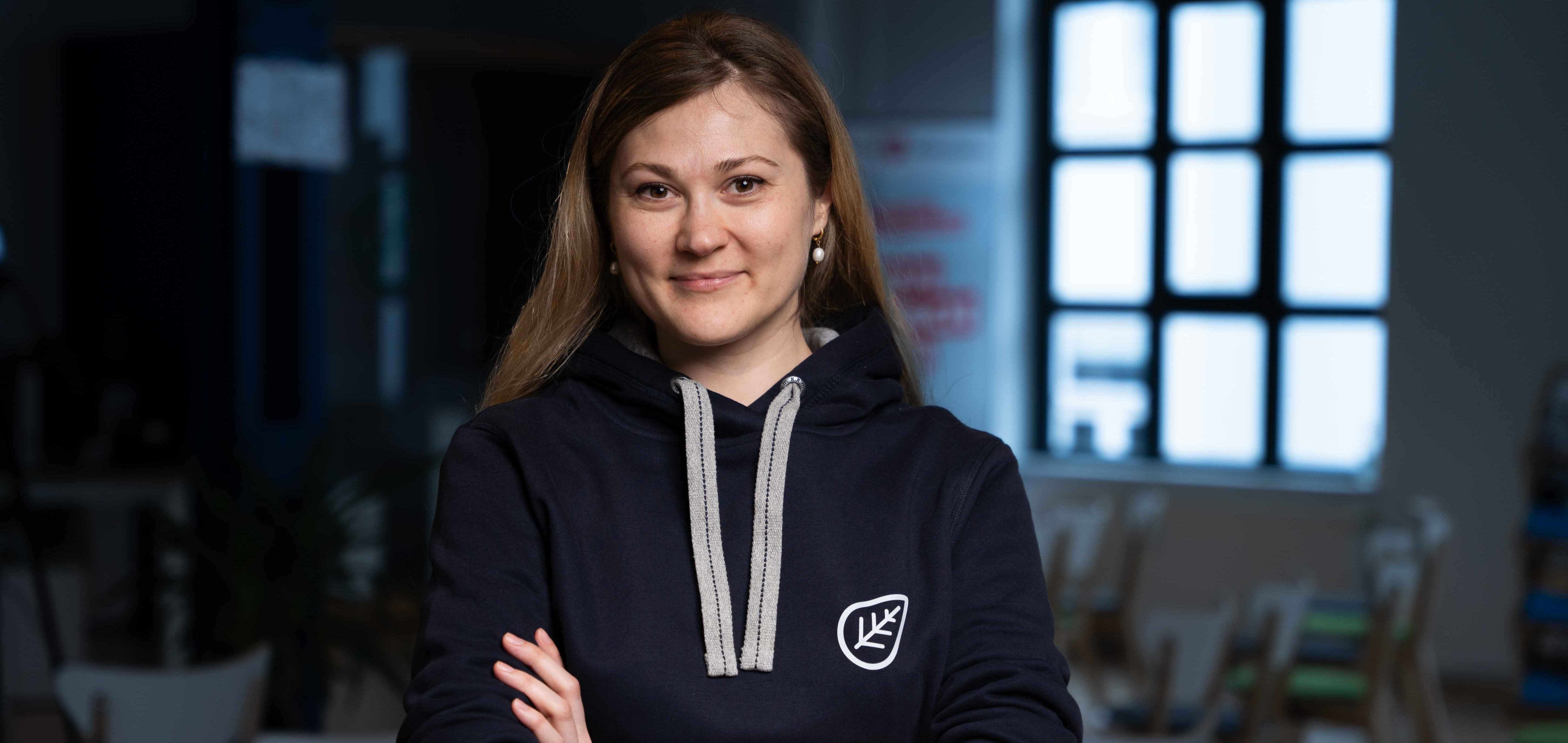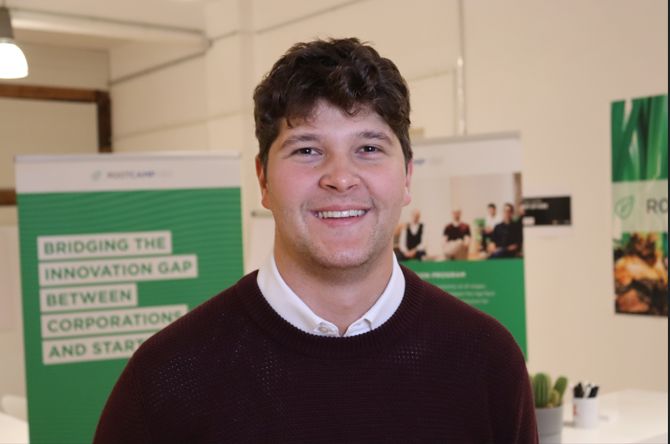Open Climate Solutions develops and implements nature-based climate protection measures that reduce greenhouse gas emissions. They focus on projects that combine regenerative aquaculture with agriculture to restore coastal ecosystems, improve soil quality, and create sustainable jobs. The startup adopts open-source principles, making knowledge and technologies freely accessible to accelerate the spread of effective climate protection solutions. Discover how this brave team uses seaweed to cut emissions and promote biodiversity.
Can you explain why you chose seaweed? What is the power of Seaweed in Agriculture?
We chose seaweed because it is a highly sustainable and regenerative resource that offers significant benefits for agriculture. Our biostimulant is derived from novel seaweed species that are regeneratively cultivated, rather than wild-harvested. This ensures a sustainable and renewable source of biomass, avoiding the exploitation of natural marine ecosystems.
By cultivating seaweed instead of harvesting it from the wild, we can tightly control and monitor the quality of our feedstock. This enhances product quality by optimizing cultivation conditions to boost bioactive compounds. It also improves consistency and predictability in crop performance, tackling a common challenge with biological inputs.
Seaweed is a natural biostimulant, rich in polysaccharides, phytohormones, trace minerals, and antioxidants, which improve plant resilience, increase nutrient use efficiency, and enhance soil health. Unlike conventional fertilizers, our seaweed-based biostimulant helps crops withstand stress conditions such as drought and poor soil quality while reducing reliance on synthetic inputs.This makes our solution scalable, regenerative, and farmer-friendly, providing a reliable alternative for improving agricultural productivity in a sustainable way.
How do your seaweed farming and biostimulant production support regenerative carbon removal and ecosystem restoration while remaining economically viable for farmers?
Our mission is to develop a regenerative agricultural solution that not only supports farmers but also removes carbon and restores ecosystems. As we scale, the environmental benefits grow—improving soil health, strengthening crop resilience, enhancing marine biodiversity, and increasing carbon sequestration.
Seaweed plays a key role as a natural carbon sink, absorbing significant amounts of CO₂ as it grows. After extracting bioactive compounds for our biostimulant, we convert the remaining algae residue into biochar, a stable form of carbon. Since this biochar comes from regeneratively cultivated seaweed, it represents a truly additional carbon removal solution.
Our approach to regenerative aquaculture prioritizes farmed seaweed over wild harvesting, helping to preserve marine ecosystems while improving water quality and reducing eutrophication. At the same time, regenerative agriculture benefits from stronger, more resilient crops, reduced reliance on chemical inputs, and lower agricultural emissions.
By integrating carbon removal, soil health, and economic sustainability for farmers, we are building a scalable, circular system where regenerative seaweed cultivation directly drives agricultural and environmental impact. Linking regenerative aquaculture with regenerative agriculture strengthens food system resilience while actively removing CO₂.
What challenges have you faced, and how are you addressing concerns or skepticism from potential customers?
Like any agricultural innovation, introducing cultivated seaweed biostimulants comes with challenges. One of the biggest hurdles is farmer skepticism, as many are reluctant to partially replace conventional fertilizers with biostimulants. To overcome this, we prioritize scientific validation and field trials that demonstrate clear improvements in yield and crop resilience.
Another challenge is the need for proper application knowledge. Farmers must understand how and when to use biostimulants to achieve the best results. To support them, we are developing application intelligence tools that ensure ease of use, minimize risks, and maximize impact.
Regulatory approval is another obstacle, as agricultural inputs must meet different standards across various markets. We are addressing this by collaborating with research institutions and regulatory experts to streamline compliance and accelerate market entry. By working directly with farmers, conducting on-field demonstrations, and providing transparent data, we are building trust and ensuring that our solution is both practical and beneficial.
.jpg?width=1018&height=675&name=26.02.2025%20-%201500-1800%20(3).jpg)
With successful field trials on winter wheat in Germany and potted plant trials, what have you learned from these experiments?
Our trials have provided valuable insights into the performance of our seaweed-based biostimulant under different conditions. In controlled potted plant trials, we observed significant positive effects, such as higher chlorophyll content and improved stress tolerance. However, we recognize that results from controlled environments do not always directly translate to field conditions due to variations in soil, weather, and farming practices.
Field trials on winter wheat in Germany have reinforced the importance of real-world testing, helping us understand how biostimulants interact with complex environmental factors. Some benefits observed in potted trials are less pronounced in open-field conditions, highlighting the need for more extensive field testing to optimize consistent performance.
To address this, we are expanding our field trials to gather more real-life data while continuing potted plant trials in parallel. Controlled trials remain essential for testing specific hypotheses, while field trials provide the necessary validation for farmers looking to integrate our product into their operations. By running both simultaneously, we aim to refine our formulation, optimize application methods, and ensure reliable benefits across different crops and growing conditions.
Why do you choose open source?
We fundamentally believe that collaboration drives innovation, and open-source principles allow us to maximize impact. By sharing knowledge and best practices, we accelerate the transition to regenerative agriculture and help build a more resilient food system. Open science fosters trust and enables researchers, farmers, and other stakeholders to improve upon our work, ultimately leading to better agricultural solutions that benefit both people and the planet. Climate change cannot be solved if we work in silos. We can only improve our agri-food system quickly enough by working together.
Meet Open Climate Solutions team and other startups from Batch#6 in person on February 25th for the RootCamp Demo Day in Hannover: Register here.
/rootcamp_logo_white_2022.png?width=2123&height=630&name=rootcamp_logo_white_2022.png)

/RC%20logo%202022.png?width=2325&height=703&name=RC%20logo%202022.png)






